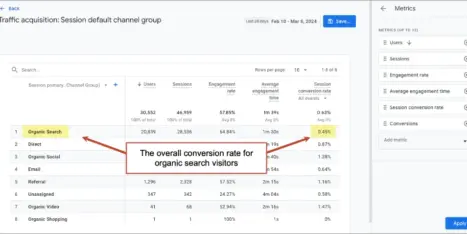I really don’t write content for my clients as much as I find myself writing for their audiences. Truly. It is constantly an exciting challenge to understand what motivates an audience, what stirs those people emotionally and what drives them to take action (or not).
For many brands that would love to create better quality content, this element gets lost in the shuffle. Why? They lead with pieces of content online that people just don’t care about in their thought process – yet – such as:
- Years in business
- Number of offices
- Number of employees
- Services list or product line
It’s not that the above isn’t important. But let’s face facts: If you fall into this category, you’re one of a million in their field who say the same thing. And worse, all of this inward-facing content is the FIRST thing you’re saying.
Your audience wants a clear demonstration of outward-facing content that shows how you understand the most pressing issues in their life. As you give them doses of insight on what you know, you’re providing breadcrumbs that lead them back to the solution you happen to have. It should almost feel like a nice “by the way…” coincidence. Even when it’s entirely by design.
One big thing that can help is crafting a Buyer Persona, essentially a profile of each distinctive person who at some point buys into your brand.
Think about the entire life of the buyer in that day or week, including the things that have nothing to do with your brand. This is very much more of an evolving profile than something you may come up with in one sitting:
- Who are all the important people your buyer comes into contact with?
- What’s the corporate hierarchy look like?
- What crucial decisions and challenges are they faced with?
- What pressures do they have?
- What goals are they charged with reaching? How’s that going so far?
- When those decisions do involve your brand, who else do they have to consult?
- What considerations do they have when it comes to family?
- What websites do they like to visit? Do they blog? Do they comment? Do they hang back on the sidelines and read only?
- What books and subject matters do they enjoy reading?
Go deeper than the surface level demographics of age, income, location, etc. We’re talking about behaviors and mentality here too.
“OK, but how am I supposed to know that?”
Get out from behind your computer.
When we engage in a Brand Audit for clients to help discover brand positioning among other things, we most certainly don’t discount data but we know there’s also a human element that can only be found in 1-on-1 interviews or group discussions that you’ll never get from data alone. Surveys are OK, but if you want to get deeply insightful, you’ve got to get face-to-face with clients, 3rd party vendors, and employees at every level.
Plain English Defeats Jargon.
Finally, a word about content creation toward this special crowd. Truth be told, many small businesses that have a complex sale to make can be fantastic at speaking on a peer-to-peer industry level, but when it comes to creating content for those who would invest in them, they have major challenges. So don’t be afraid to bring in a strategic content specialist from the outside – someone with a fresh eye who excels in converting the complex into the far more accessible.




